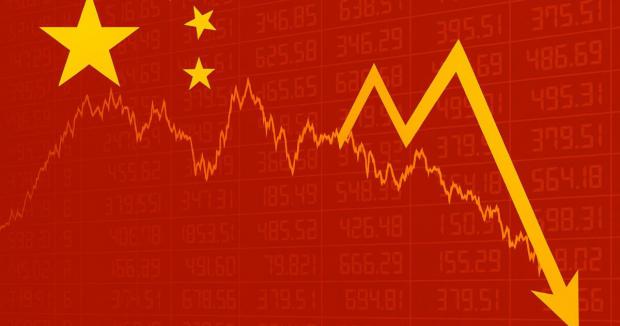
Breaking News
 Supreme Court Won't Exempt California Schoolchild From Vaccination Mandate
Supreme Court Won't Exempt California Schoolchild From Vaccination Mandate
 The Gold And Silver Boom Is Ominous
The Gold And Silver Boom Is Ominous
 "Coup d'Flat": Billionaire-Funded 'No Kings' Color-Revolution Turns Into White
"Coup d'Flat": Billionaire-Funded 'No Kings' Color-Revolution Turns Into White
Top Tech News
 3D Printed Aluminum Alloy Sets Strength Record on Path to Lighter Aircraft Systems
3D Printed Aluminum Alloy Sets Strength Record on Path to Lighter Aircraft Systems
 Big Brother just got an upgrade.
Big Brother just got an upgrade.
SEMI-NEWS/SEMI-SATIRE: October 12, 2025 Edition
 Stem Cell Breakthrough for People with Parkinson's
Stem Cell Breakthrough for People with Parkinson's
 Linux Will Work For You. Time to Dump Windows 10. And Don't Bother with Windows 11
Linux Will Work For You. Time to Dump Windows 10. And Don't Bother with Windows 11
 XAI Using $18 Billion to Get 300,000 More Nvidia B200 Chips
XAI Using $18 Billion to Get 300,000 More Nvidia B200 Chips
 Immortal Monkeys? Not Quite, But Scientists Just Reversed Aging With 'Super' Stem Cells
Immortal Monkeys? Not Quite, But Scientists Just Reversed Aging With 'Super' Stem Cells
 ICE To Buy Tool That Tracks Locations Of Hundreds Of Millions Of Phones Every Day
ICE To Buy Tool That Tracks Locations Of Hundreds Of Millions Of Phones Every Day
 Yixiang 16kWh Battery For $1,920!? New Design!
Yixiang 16kWh Battery For $1,920!? New Design!
 Find a COMPATIBLE Linux Computer for $200+: Roadmap to Linux. Part 1
Find a COMPATIBLE Linux Computer for $200+: Roadmap to Linux. Part 1
China's Mineral Power Play Will Succeed--Until It Doesn't

The fight has moved from spreadsheets to surge capacity, from the price of toys and textiles to the heart of hard power. Beijing has tightened the tourniqueton strategic minerals and the know-how that turns them into combat capability: rare-earth oxides and magnet inputs, battery-grade graphite, and the processing tools and licenses that govern them. Washington's tariff move is therefore not about revenue; it's about readiness—production timelines, ramp rates, and the ability to surge output when missiles start to fly. It's about the balance of power in an era of great-power competition. It's about survival.
That shift in focus matters because Beijing isn't revealing something new; it's scaling up the control mechanisms already in its toolkit. By expanding export licensing, walling off separation and magnet-making technologies, and extending jurisdiction to foreign-produced goods that contain Chinese content, China is translating market share into leverage. These are not bureaucratic footnotes. They are targeted constraints on the materials inside precision-guided munitions, AESA radars, aircraft actuators, electric drives, and undersea systems—sending a blunt message to Western industry: your production tempo depends on our paperwork.
The sequence is clear. In 2023, Beijing released licenses for gallium and germanium and began permit review of natural and synthetic graphite. In late December of that year, it also banned exports of rare-earth extraction, separation, and magnet-making technologies. This autumn it moved again—tightening license requirements for recycling and magnet-adjacent equipment, adding case-by-case scrutiny for semiconductor-linked uses, and signaling that all applications tied to foreign military end-uses will be largely denied. Crucially, the new measures capture not only materials but the technology and tooling that process them, and they can apply to foreign-produced magnets that incorporate Chinese content or Chinese-origin know-how (an FDPR-style rule set). Mineral statecraft is the point: weaponize chokepoints, slow relocation outside China, and convert processing dominance into bargaining power—especially where it touches Western rearmament schedules.
The near-term impact lands where the West is most exposed: time. Rare-earth and graphite chains are time-critical, not merely price-sensitive. Licenses that stretch from days to weeks ripple into missed ramp rates for programs that depend on heavy rare-earth oxides and NdFeB magnets—smart munitions, AESA radars, drive motors, targeting lasers, and quiet undersea systems. Controls on processing tools and technical assistance slow commissioning of non-Chinese plants and trap working capital in safety stock. Even modest delays at separation, metal-making, or magnetizing steps can stall rearmament just when it needs to accelerate. That is the seam Beijing is squeezing: impose schedule risk, erode trust, and remind everyone that "resilience" is merely rhetoric unless factories actually produce.

 Insurrection Anyone?
Insurrection Anyone?


